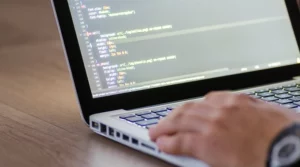During the early years of app development, the applications were very simple with the intention of performing one task at a time. However, with time, the demands of end-users began to rise. This means that the users demanded the application to perform a series of different tasks at a given point in time. These complexities led to various critical bugs and errors in the application that could crash it completely.
To prevent these errors the developers started to emphasize the testing phase of the application and devising different types of test cases. The primary objective of variation in testing was to ensure that all the elements of the application are tested properly according to their priorities. Smoke testing is one such form of testing that ensures that all the critical components of an application are working as intended.
Smoke testing is fairly new to the market and is still going through several integral changes. So, there are certain factors that the developers must keep in mind to utilize the full potential of this testing process. With the help of this article, we will discuss some of the most important tips to utilize the full potential of smoke testing.
The basics of Smoke testing
Smoke testing is also popularly known as build verification testing. In this form of the testing process, the developers have to conduct a series of non-exhaustive test cases to ensure that the core structure of the application is stable. The developers have to run the test code through a basic path to check whether the application breaks while executing the code.
In case of a failure, the developers have to roll back the application to ensure that all the errors are removed through scientific development processes. On the other hand, if the smoke test cases pass through without any failure, the developers can get an indication that they are on the right path of development. This will also ensure that the core functions of the software are functional and available.
Smoke testing is one of the simplest yet most important test cases to verify that the application is suitable for moving on to the production phase. In this competitive application development industry, the developers cannot afford to compromise the quality of an application. Various tools help developers to initiate automated smoke testing.
LambdaTest is a cloud-integrated platform that helps developers to verify the cross-browser functioning of their modern web applications. Cross-browser compatibility test cases ensure that the web application stays caught up in performance even after changes in the operating system, device version, or browser version.
Using LambdaTest, the developers cannot only initiate automation testing but also implement parallel test cases to further improve the efficiency of the testing cycle. Using parallel test cases, the developers can execute different testing configurations on multiple machines at the same time. LambdaTest supports multiple test automation frameworks like Cypress, Selenium, and Playwright. While using Selenium, the developers can run the test cases on more than 3000 different browsers, browser versions and OS. Lastly, LambdaTest combines reports from emulators, simulators, and even real devices to improve accuracy.
Best Tips to Perform Smoke Testing
Now let us take a quick look at some of the important tips that can help the developers to improve the smoke testing on their applications:
1. Implement Some testing During the Early Stages of the App Development
The development team will finish creating the basic and core functions of the application during the early stages of the development lifecycle. So, the testers need to introduce smoke testing in the early stages of the development process. This step will help them to ensure that at least the basics of the application are working fine before they can move on to the advanced features. Many experts believe that introducing smoke testing in the early stages of the development process helps to eliminate a lot of hassle in the application testing phase.
2. Record all The Smoke Test Cases
The test results for smoke testing are essential not only during the analysis phase but also in the further steps of the application development lifecycle. So, the developers need to record the smoke test cases and also their execution phase. This will allow them to refer back to the test cases whenever they need it, or they’re stuck with a critical function of the application. There are various tools that the developers can use for recording each step involved during the execution of smoke test cases. Recording smoke testing is also important to ensure the integration of continuous testing and development.
3. Smoke Testing Should be Quick
A critical rule that is quite famous in the application development industry is that smoke test cases must be completed in under 60 seconds. This is because the test code of smoke testing is quite basic and only tests the core functions of the application. Therefore, it is an unnecessary process to extend smoke testing as it will hamper the time allotment for other advanced processes involved in the application development lifecycle. This is one of the important factors that the developers must consider while framing the application test case and also designing the test plan.
4. There is no specific time for Smoke Testing
One of the common misunderstandings related to smoke testing is that it should be conducted only during the initial stages of the application development lifecycle. However, it is a common misbelief as there is no fixed time for initiating smoke testing. This means that the developers can introduce the smoke test cases at any point of the application development lifecycle according to their requirements. This process is highly critical as the core functions of the application will go through a continuous updating process as the application continues to mature. Similarly, the developers also have to introduce smoke testing with the release of every simultaneous update for the application.
5. It is important to Understand that Smoke Testing and Sanity Testing are Different
One of the common misbeliefs in the application development industry is that smoke testing is similar to sanity testing. This is highly incorrect and there are some prominent differences between these two types of application testing. For instance, sanity testing occurs slightly at a later phase of the application development process. Moreover, a sanity test is somewhat of a safety mechanism that ensures that the possible updates to the application do not have any negative impact on the core performance. The testing scope of sanity testing is much lower compared to smoke testing.
6. Maintain a Test Case Repository
During the application development and testing phase, more than 90% of the team will be busy with new features that will be added to the application. Therefore, it is very important to realize the entire development team will profit a lot with the help of a testing repository. The testing repository can be as simple as framing and regarding the test cases as you proceed with the development phase. This will help the developers and testers to introduce changes in the application as and when required. A testing repository is also important for the introduction of Agile methodologies.
7. Introduce Automation Testing
Automation testing is one of the most important components of the modern application development industry. Using automation testing, the developers can execute their repetitive test cases in the application with the help of automated test scripts. Since smoke testing involves testing the vital components of an application that are almost the same in most apps, it can benefit a lot from automated test cases. As we already discussed in the earlier part of the article, there are various online platforms like LambdaTest that can help developers to introduce automation testing with smoke test cases.
8. Use Smoke testing as an Indication of Advanced Testing
Smoke testing is one of the most important indicators that can ensure that the application is ready for more advanced testing processes. This is because it is impossible to provide advanced testing like UI test cases and visual testing without ensuring that the core framework of the application is working perfectly. This is yet another factor that justifies why smoke testing should be conducted in the early stages of the application development process.
9. Smoke Testing Must test all the Critical Components of the Application
The primary objective of smoke testing is to ensure that all the critical components of an application are working as expected. So, the developers must frame the smoke test cases in such a way that it covers all significant parts that are critical for the stable functioning of an application. The developers should also expand the code if required but should not compromise on the functioning of the core elements of the application. After smoke testing, the developers can use traditional test cases like exploratory testing to further evaluate the functioning of the application.
10. Smoke Testing Should Not Overshadow Traditional Testing
Smoke testing is indeed critical to ensure that the basic functions of the application are working as expected but it should not overshadow the importance of other traditional test cases. This is because it is impossible to maintain user satisfaction by only providing basic services. So, the developers must conduct other testing processes like UI testing, exploratory testing, regression testing, visual testing, and cross-browser testing with the same importance. This will ensure that all the components of the application are working as intended by the company.
The Conclusion
So, we can conclude that smoke testing is one of the most integral components of the application development lifecycle. The developers can integrate smoke testing with automated test cases to not only improve the quality of the application but also deliver it in a short time. However, the testers need to acknowledge the importance of manual testing as there are certain components of an application that cannot be tested without the involvement of a human developer. Lastly, application development companies need to spread proper awareness regarding the importance of smoke testing. The testers should also use proper tools and platforms to improve and reduce the simplicity of smoke test cases.







